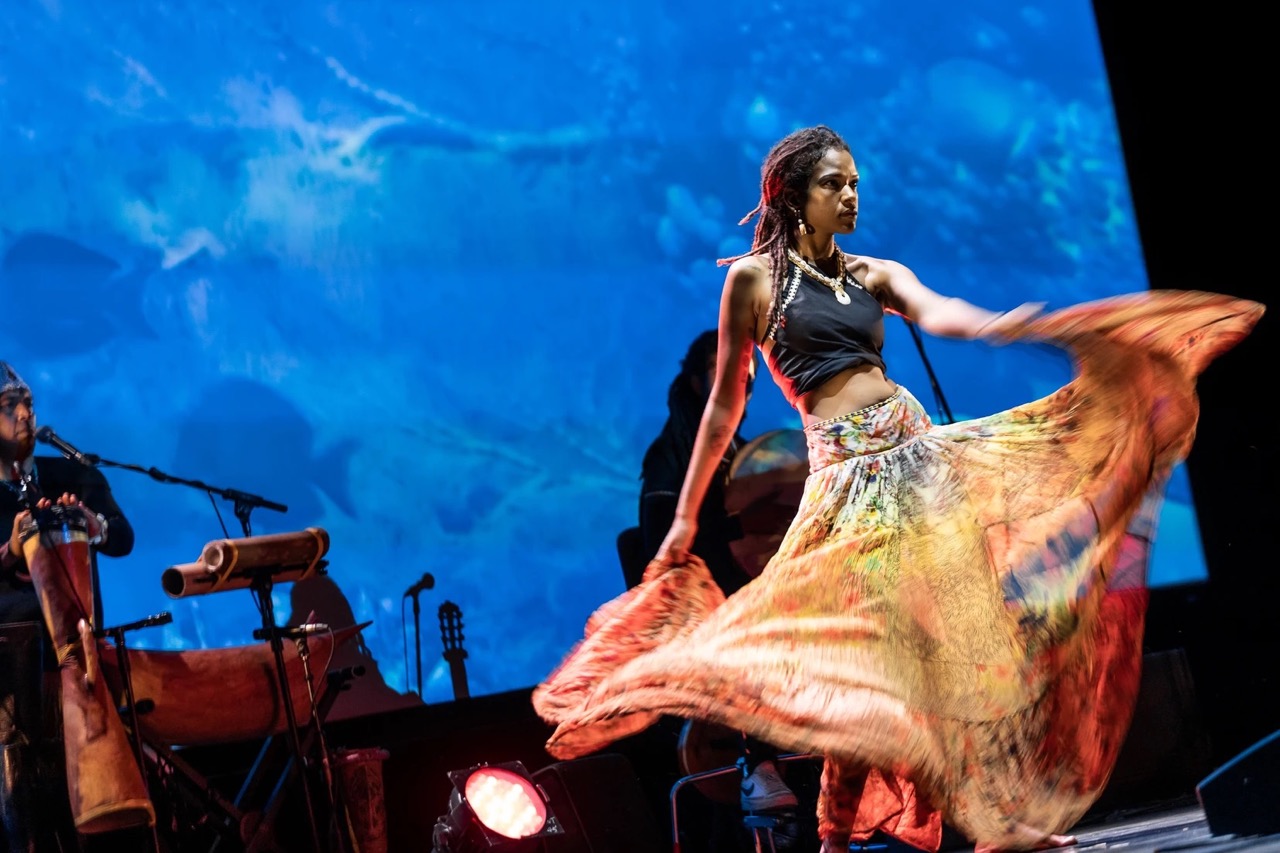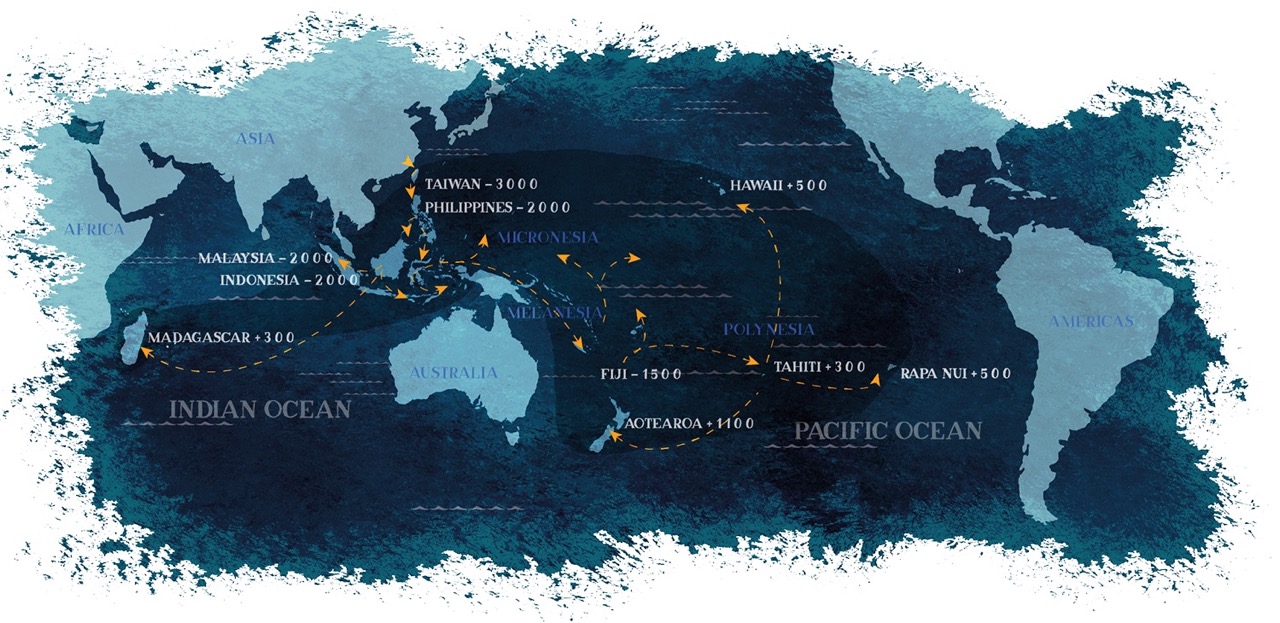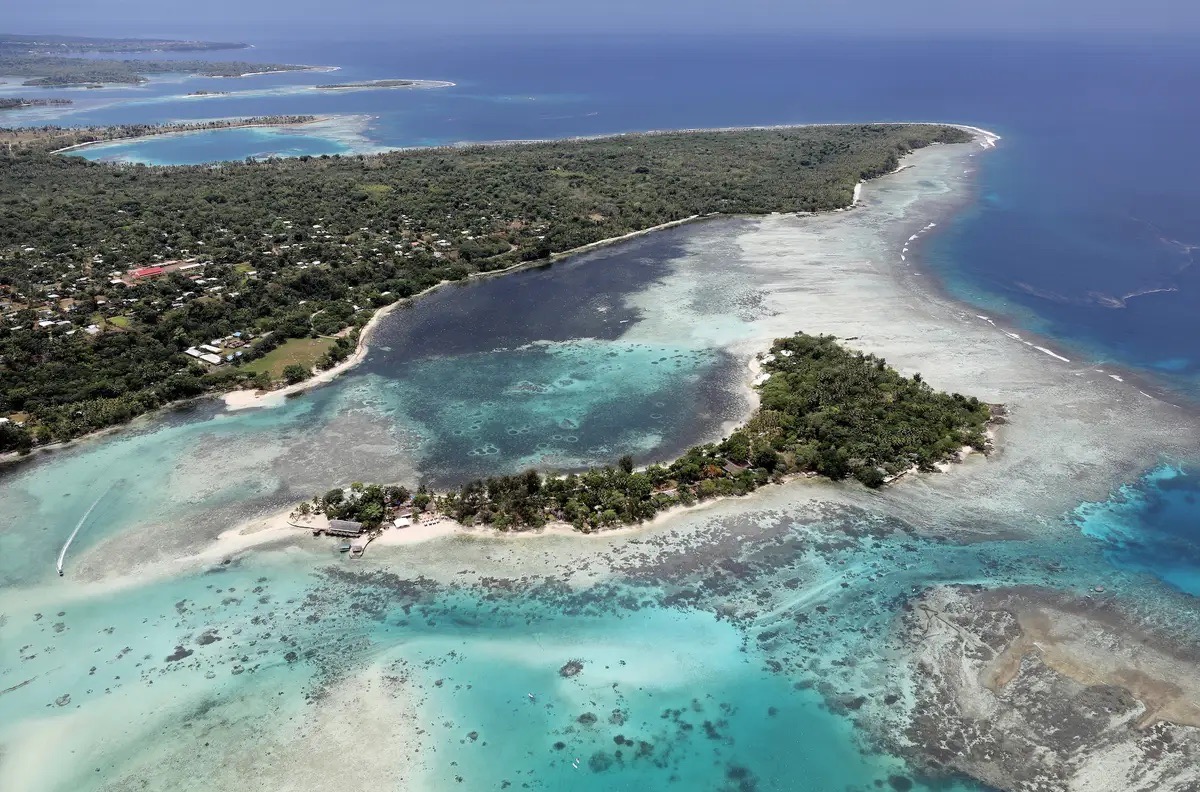What is Small Island Big Song?
- Small Island Big Song is an international multimedia collaboration bridging cultures across the Indian and Pacific Oceans. This project mixes traditional Austronesian music and culture with the influence of contemporary genres. The creators of Small Island Big Song have produced two award-winning albums, a film, and live concerts (images below).
- Small Island Big Song was produced and organized by BaoBao Chen and Tim Cole. From 2014 to 2017, they traveled across island nations, from Madagascar to Hawai’i, recording local artists performing in their native tongue using traditional instruments. Chen and Cole aimed for the project to showcase the cultural heritage of seafaring Austronesian cultures. Small Island Big Song features over 100 musicians from 16 island nations.

Photograph of Small Island Big Song artist Emlyn performing a Sega dance at the 2023 Taiwan International Festival of Arts (TIFA) in Taipei, bringing life back to a bleached coral reef in the song ‘Festival of the Living Ocean’. (from Small Island Big Song 2023, image by Tony Tsai)

Photograph of Small Island Big Song artist Putad performing “Lament for a Dying Ocean,” the partner song to “Festival of the Living Ocean,” pictured above (from Small Island Big Song 2023, image by Kimmi Cranes).
- Austronesian peoples originate from Taiwan, where groups of seafarers migrated from at different points in history (image below). Historically, Austronesian groups voyaged between islands, exchanging culture. One of the goals of Small Island Big Song is to reunite cultures and bring people together through music.
- You can learn more about Small Island Big Song here. You can view and listen to performances here.

Map of Austronesian migration. Starting from Taiwan, seafarers made their way to settle islands across the Indian and Pacific Oceans (from Cole and Chen, 2020). The numbers represent the approximate year that people first arrived at each island with (-) signs denoting BCE (Before Common Era) and (+) signs denoting CE (Common Era).
How is it related to climate?
- Another major goal of Small Island Big Song is to raise awareness of the effects of the climate crisis on island nations. Producers Chen and Cole were compelled by the 5th Intergovernmental Panel on Climate Change (IPCC) report in 2014. Earlier, they had worked with Pintupi Elders, Indigenous Australian peoples, and were inspired by their culture and relationship with nature.
- Indigenous groups have lived sustainably in their traditional land for thousands of years. Despite making little to no contribution to anthropogenic climate change, Indigenous communities are facing the most severe climate effects. For example, many low-lying island nations are rapidly losing land due to rising sea levels. Human-induced climate change is also making storms stronger and possibly also more frequent, threatening island nations in tropical latitudes.
- As a result of climate change, Indigenous peoples and cultures are at risk. Through song and dance, Small Island Big Song aims to share cultural knowledge and unite seafaring peoples from the Indian and Pacific Oceans in efforts to advocate against the unwanted consequences of climate change.
- Climate advocacy can go a long way. In March 2023, years of tireless work paid off for Vanuatu, a small Pacific island nation at risk from climate-induced storms and sea level rise (image below). They successfully persuaded the United Nations to request an advisory ruling from the International Court of Justice to refine the legal consequences of high-emitting countries for climate-related damages. This is a historic win for Vanuatu and other island nations as it will hold industrial nations accountable and promote international cooperation against climate change.

Photograph of the coastline of Erakor island, part of the island nation of Vanuatu in the South Pacific Ocean. Many Pacific islands have a low elevation, leaving them vulnerable to even small amounts of sea level rise (from Pasley, 2020).
References and additional resources
- Arcaya, M. and Gribkoff, E. “Climate Justice.” MIT Climate Portal. March 2022. https://climate.mit.edu/explainers/climate-justice.
- Birnbaum, M. “How a small island got world’s highest court to take on climate justice.” The Washington Post. March 2023. https://www.washingtonpost.com/climate-solutions/2023/03/29/vanuatu-international-court-un/.
- Broughton, S. “Oceanic Songlines.” Songlines. November 2018.
- Cole, T. and Chen. B. “About: Small Island Big Song.” Small Island Big Song. 2020. https://www.smallislandbigsong.com/about.
- “Island Nations on climate crisis frontline ‘not sitting idly by.’” United Nations News. September 2019. https://news.un.org/en/story/2019/09/1047652.
- NASA. “Warming seas may increase frequency of extreme storms.” NASA. January 2019. https://climate.nasa.gov/news/2837/warming-seas-may-increase-frequency-of-extreme-storms/.
- Pasley, J. “The Pacific Islands are drowning under rising sea levels. These stunning photos show their precarious way of life.” Business Insider. January 2020. https://www.businessinsider.com/pacific-islands-stunning-photos-sea-levels-way-of-life-climate-2020-1.
- Skaw, M. “Small Island Big Song brings climate change awareness to Penn State through song, dance.” The Daily Collegian. April 2022. https://www.psucollegian.com/culture_lifestyle/small-island-big-song-brings-climate-change-awareness-to-penn-state-through-song-dance/article_7a511950-b752-11ec-8857-9ff15a65f3e1.html.
- “Small Island Big Song.” Small Island Big Song. 2023. https://www.smallislandbigsong.com/.
- “Small Island Big Song 小島大歌.” Small Island Big Song 小島大歌. 2023. https://www.youtube.com/@SmallIslandBigSong/videos.
- UMass Amherst Fine Arts Center. “Small Island Big Song – Climate Panel Discussion.” University of Massachusetts Amherst. March 2022. https://fac.umass.edu/Online/default.asp?BOparam%3A%3AWScontent%3A%3AloadArticle%3A%3Apermalink=SmallIslandClimatePanel.
